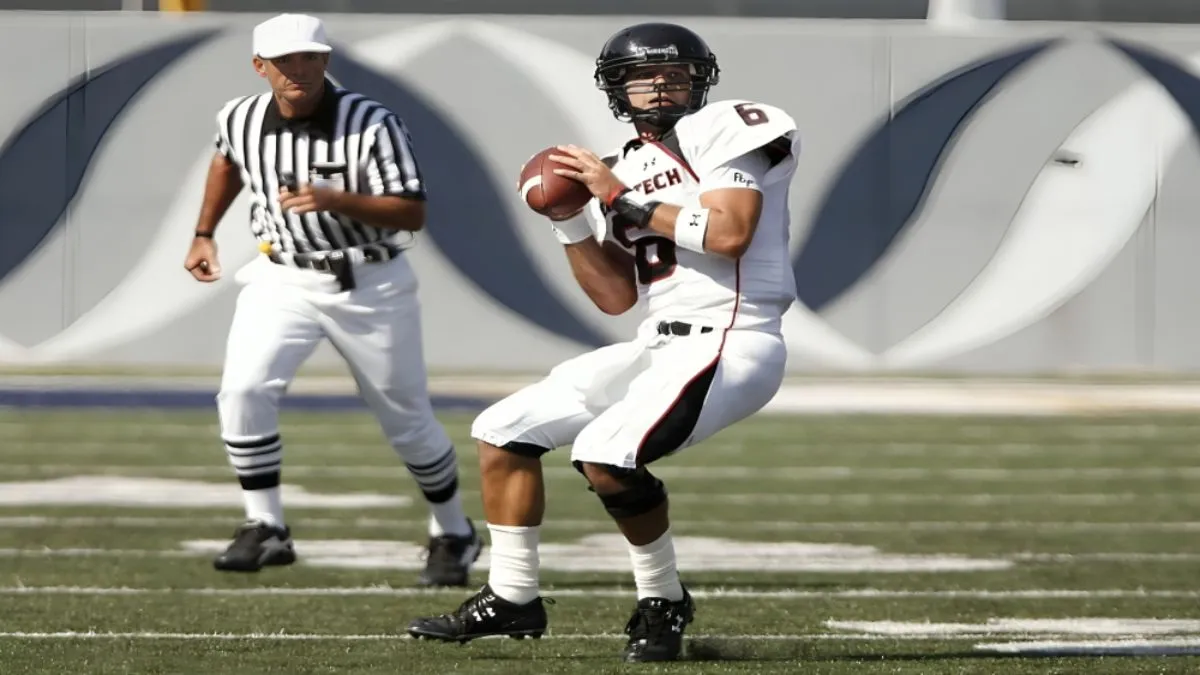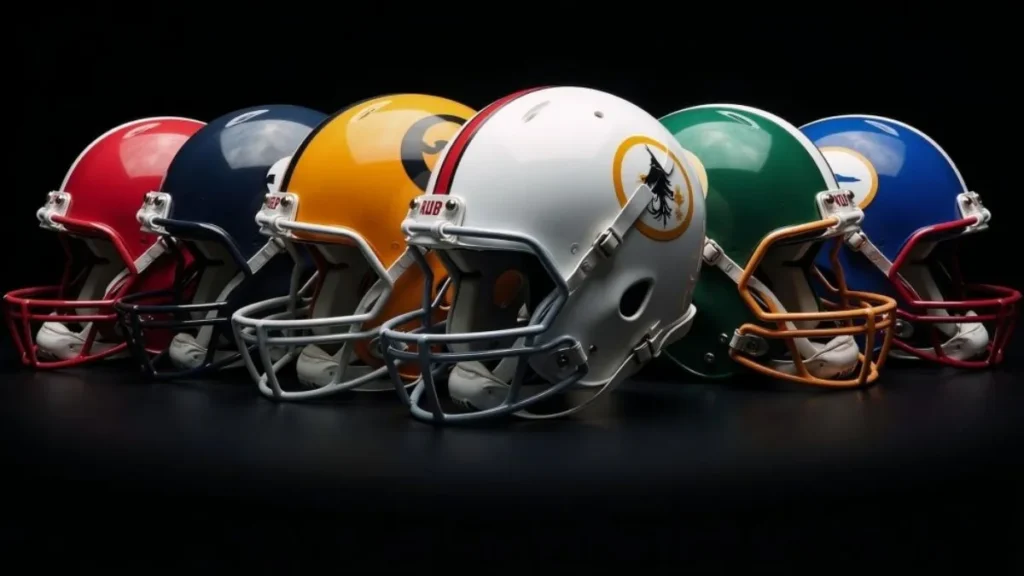SPORTS
Tech on the Field: Advancements in Football Uniform Fabrics

You know the old saying, ‘clothes make the man’? Well, in the world of football, the fabric of the uniform can make the player. The type of material used in a football uniform can significantly impact a player’s performance and even their safety on the field.
Over the years, advancements in fabric technology have led to uniforms that are more breathable, durable, and even weather-resistant. But what does this mean for the future of the sport? Let’s just say, you’ll want to stick around to find out.
Table of Contents
The Evolution
There has been a drastic transformation in football uniforms over the years, especially in terms of the materials used. These shifts reflect technological advancements and the changing needs of the players. Initially, the go-to fabrics were heavy wool and cotton. However, these were uncomfortable to play in and restricted the players’ movements because they were bulky and held moisture.
In the 1970s, polyester became prominent. It’s lightweight, durable, and resistant to shrinking and creasing. Despite its benefits, polyester didn’t adequately wick away sweat, which left players feeling hot and heavy.
Microfibers were then introduced around the late 20th century by combining polyester with nylon. These microfibers are thinner than silk strands which makes them lighter than other types of fabric. It also resulted in improved sweat-wicking capabilities so it evaporates moisture away from the skin and dries quicker as well.
More recently, spandex has been used in football uniforms. It’s perfect for sportswear because of its elasticity, ensuring the uniform fits snugly while allowing unrestricted movement. Spandex is commonly blended with other fibers such as cotton, polyester, or nylon to add stretchiness. This elasticity allows them to expand but recover their shape.
Breathable Fabrics
The breathability of the football uniform is a factor that should be considered to enhance on-field comfort. A fabric that is breathable lets air pass through easily. It’s great for sweat management as well as temperature regulation. These include:
Polyester Blends
Polyester is a popular fabric in football uniforms and other sportswear because it’s inexpensive, durable, and versatile. It’s often combined with other fabrics to enhance performance. When mixed with spandex, it creates stretchy garments like leggings; with cotton, it produces a breathable material suitable for warm seasons.
Mesh Fabrics
Mesh has a box-like grid pattern, usually made from polyester and nylon. Its hydrophobic fabric composition makes it quick drying and effective in moisture-wicking. Mesh is lightweight, soft, and comfortable to wear, a perfect material for football uniforms.
Nylon
Developed in the 1930s as a silk substitute, Nylon is known for its strength and durability. It’s ideal for activewear that undergoes heavy use like a football uniform. Nylon is commonly found in sports bras and compression garments for added support.
Cotton Blends
Cotton has excellent absorbency, meaning it’s efficient in soaking up moisture and sweat from the body. In fact, it can hold water up to 25 times its weight. Cotton is naturally soft and gentle on the skin, making it suitable for all skin types, including sensitive skin.
Choosing the right breathable fabric is important to your performance on the field. It can make the difference between feeling weighed down and hot, or feeling light, dry, and ready to take on the competition.

Role of Technology
Technology has given us the ability to create fabrics that aren’t only stronger and more durable but also more comfortable and adaptable to the rigors of the game. As a result, players can now customize their football uniforms without skimping on the quality of the materials used.
Consider the following advancements, which should evoke both excitement and admiration:
Microfiber Technology
This allows for the creation of fabrics that are thinner, more lightweight, and yet stronger than ever before. It is typically less than 10 micrometers in diameter and weighs less than 0.7 deniers. To put it in perspective, a strand of silk is about one denier, making microfiber one of the finest textile fibers in the market. It is also being used for cleaning and homeware, which just goes to show how versatile the material is.
Moisture-wicking Technology
Contrary to popular belief, moisture-wicking fabrics don’t absorb water. Instead, they form into droplets within the fabric which are then drawn out to the surface through capillary action. Once exposed, the droplets quickly evaporate. Since sweat is mostly water, moisture-wicking fabrics have been predominantly used in high-intensity activities like football and other sports.
Antimicrobial Properties
Sweat from athletes’ bodies provides the proper condition for the breeding of bacteria and the formation of odor. This is the reason why antibacterial clothing is important in sports. Many companies now use nanotechnology to create sportswear that fights off bacteria that may cause odor and infection. Fabrics are being treated with certain types of nanoparticles like Zno and Ti02 to produce a material that has “self-cleaning” properties.
Thermal Regulation Technology
Thermoregulation is how the body controls its core temperature. When exercising in warm conditions, the body mainly cools down by sweating, balancing the heat it produces with the heat it loses.
There are many factors that affect the body’s thermoregulation and feeling of comfort, such as the fabric’s fit, knit structure, and air permeability. Different technologies have been used on fabrics to actively cool the skin, like embedding aluminium-based dots to conduct heat away or using hydrophilic rings to create a cooling effect when triggered by sweat.
3D Printing
An integral part of the football uniform is the helmet. Because football is such a physical and contact sport, players need to wear helmets to prevent skull fractures and serious brain injuries. 3D technology has made it easier to customize helmets depending on the shape of the player’s head. This is particularly beneficial since no two players move in the same way.

These innovations are game-changers. They’ve redefined what’s possible in football uniform construction, offering you unparalleled performance, comfort, and durability.
Prime Examples
Let’s dive into some notable examples of innovative football uniforms that have already hit the field, showcasing advancements in fabric technology and design.
Nike’s Vapor Untouchable
Ahead of the 2016 NFL Pro Bowl, Nike introduced the Vapor Untouchable uniform. According to its then creative director, Todd Van Horne, what made this product innovative was that it was a head-to-toe performance system that helped enable football players to be faster and more comfortable.
The Vapor Untouchable was the result of 21 months of painstaking research. The uniform has minimal seams and panels, which makes it harder for opponents to grab. It’s incredibly light, weighing at just 20.4 ounces. The cleats use 3D printing to test stress points and are the lightest and most adaptive available at the time.
Adidas Primeknit A1
Another standout is Adidas’ Primeknit A1 football uniform which debuted at the 2018 Army All-American Bowl. The uniform featured a body-mapped jersey design with ribbed knit patterns for a snug fit, and reduced seams that can cause chafing. The innovative ClimaCool technology incorporated in the fabric enhances breathability and thermoregulation.
Chevron patterns on the uniform’s chest increase durability, while the internal silicon grip patterns secure the shoulder pads. The pants, with bonded pockets and ribbed Primeknit knees, offer added comfort and compression. The uniform was worn by football players at some universities in its 2018-1029 season like Georgia Tech, Mississippi State, and Texas A&M.
Under Armour’s Highlight
Under Armour’s Highlight uniform, meanwhile, leverages HeatGear technology. This fabric wicks sweat away from the body, keeping players cool, dry, and light. The strategic ventilation over major heat zones further optimizes temperature control.
This technology allows players to move freely during crucial game moments, like running, diving, or making game-saving plays. The material offers stretch in key areas while maintaining a snug fit all around.
Each of these examples represents a step forward in uniform design. The future of football uniforms lies in the continuous evolution of fabric technology.
The Future of Football Gear: Innovations in Fabric Technology
Imagine donning your football uniform, feeling the cool, breathable fabric against your skin, providing a snug but comfortable fit. The material is strong and designed to withstand intense gameplay. All thanks to innovations in fabric technology.
Looking ahead, it’s evident that the future of football uniforms will continue to be shaped by ongoing developments in the field. With each new advancement, players can expect to see further improvements in their gear so that they’re always equipped to tackle the challenges of the game head-on.
-

 GENERAL6 months ago
GENERAL6 months agoChristofle – For Those Who Dream of Family Heirloom Silver
-

 SPORTS8 months ago
SPORTS8 months agoDiscover the World of Football with Streameast: Watch Your Favorite Leagues and Tournaments
-

 GENERAL5 months ago
GENERAL5 months agoUncovering the World of кинокрадко: The Dark Side of Film Piracy
-

 GENERAL2 months ago
GENERAL2 months agoATFBooru: Anime, Gaming, and Subculture Imageboard























